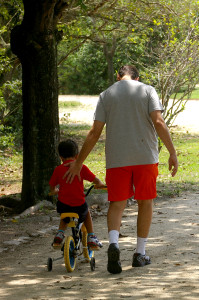Attachment Issues: Foster Care System History 1960s – 1970s
 The idea of what the relationship between foster children and foster parents should be evolved during this crucial time in foster care system history. Bonding between foster parents and foster children was beginning to be encouraged, rather than discouraged. In some cases, this led to fewer moves for children in foster care and greater stability.
The idea of what the relationship between foster children and foster parents should be evolved during this crucial time in foster care system history. Bonding between foster parents and foster children was beginning to be encouraged, rather than discouraged. In some cases, this led to fewer moves for children in foster care and greater stability.
(Reprinted from the New Jersey Foster Parents Association’s (now known as Foster and Adoptive Family Services, or FAFS) twentieth anniversary program.)
Foster Care System History 1960s – 1970s – Keep It Moving
In 1963, the agency known as the State Board of Child Welfare became the Bureau of Children’s Services. In 1972, it became the Division of Youth and Family Services (now known as the Division of Child Placement and Permanency, or DCP&P).
As the agency grew and changed, some of its practices failed to keep pace with the developing philosophy of permanency planning. For instance, many social workers regularly moved children from one foster home to another to avoid having foster parents and foster children become too attached — in other words, to avoid what today is called “bonding” (and is encouraged). And many social workers excluded foster parents from every aspect of planning for the child’s future.
Fortunately, in the early 1970s, there were some social workers who had a different notion about the role of foster parents in a child’s life, and word of this modern attitude began to travel through the loosely-knit foster parent network.
More and more foster parents came to believe that someone must speak out on behalf of foster children, and if not for foster parents, then who?
This conviction led to the founding of the New Jersey Foster Parent Association, now known as Foster and Adoptive Family Services (FAFS) in 1974, one of the most significant milestones in foster care system history in NJ in the 1970s.
 We have a story we like to tell here at Foster and Adoptive Family Services.
We have a story we like to tell here at Foster and Adoptive Family Services. 

 The idea of what the relationship between foster children and foster parents should be evolved during this crucial time in foster care system history. Bonding between foster parents and foster children was beginning to be encouraged, rather than discouraged. In some cases, this led to fewer moves for children in foster care and greater stability.
The idea of what the relationship between foster children and foster parents should be evolved during this crucial time in foster care system history. Bonding between foster parents and foster children was beginning to be encouraged, rather than discouraged. In some cases, this led to fewer moves for children in foster care and greater stability.